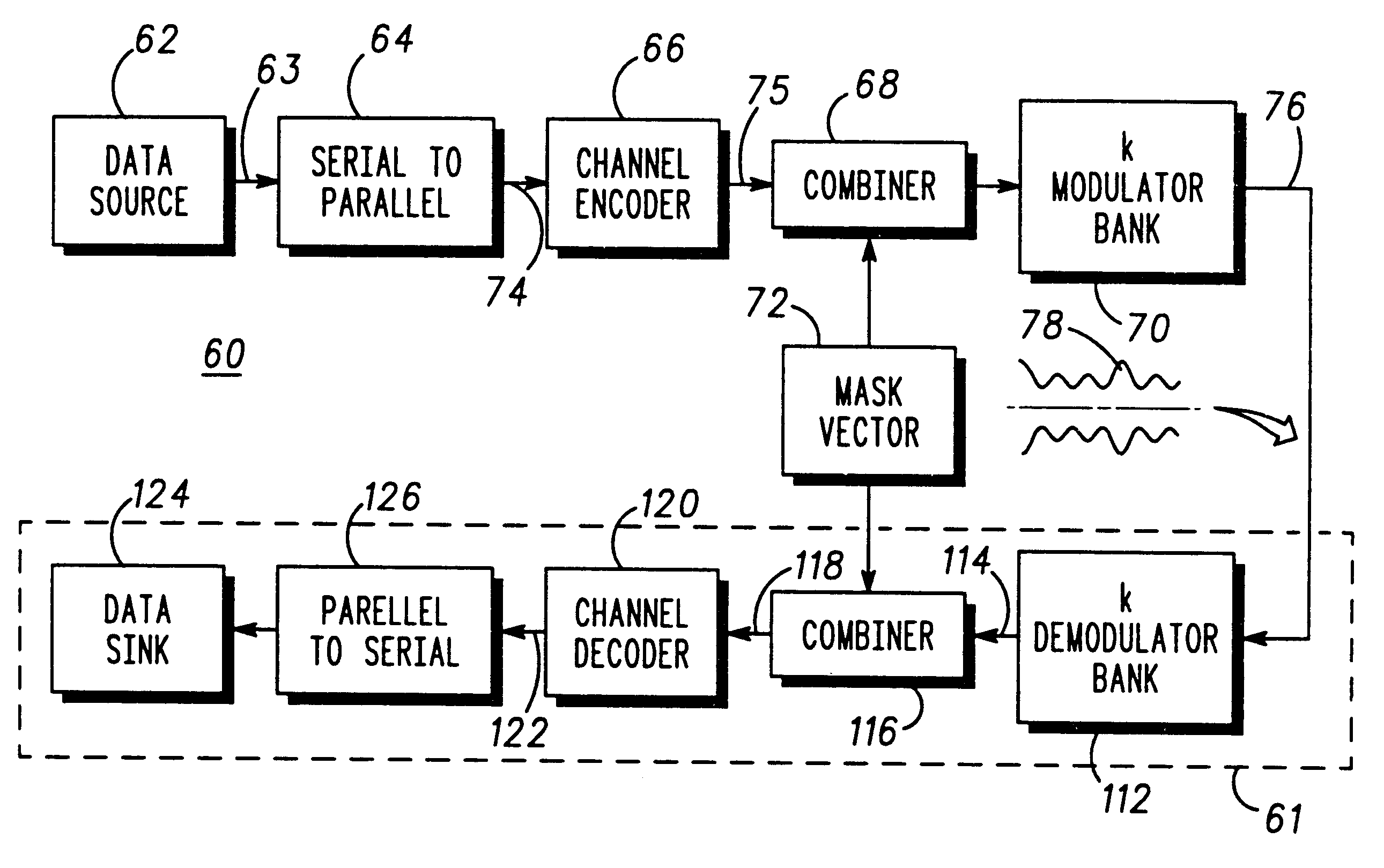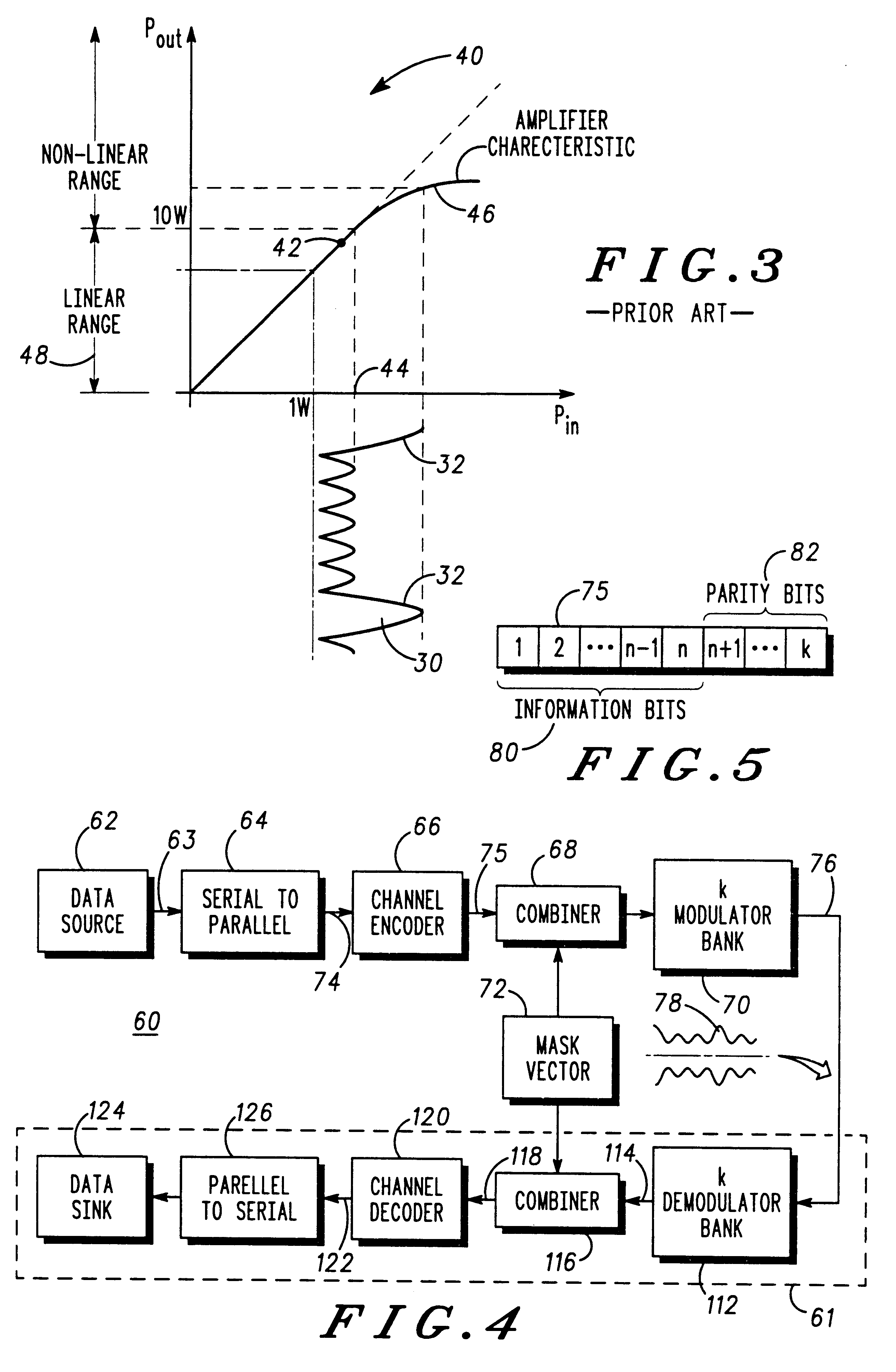Multicarrier communication system and method for peak power control
a communication system and multi-carrier technology, applied in multiplex communication, orthogonal multiplex, baseband system details, etc., can solve the problem of linear (and consequently inefficient) transmit amplifier for amplification of this composite signal envelop
- Summary
- Abstract
- Description
- Claims
- Application Information
AI Technical Summary
Benefits of technology
Problems solved by technology
Method used
Image
Examples
Embodiment Construction
Referring to FIG. 1, there is shown a physical representation of the mechanism by which a prior art time dispersive channel is formed. Explicitly, a data signal r(t) is subjected to a multiplicity of paths (only two of which are shown), one of which contains a time delay 10, an attenuator 12 and a phase offset 13. At a later point, the multiplicity of alternate paths are combined (as represented by summation block 14) to obtain a distorted signal R(t). As will be understood, as the bandwidth for the data signal r(t) increases, the period of the time delay affects the signal to a greater extent, and so limits the use of an available bandwidth.
FIG. 2 is a waveform diagram illustrating the formulation of a time domain signal of a prior art multicarrier system. Indeed, FIG. 2 is representative of an OFDM scheme in which the effects of the time delay are mitigated against by distributing data (not shown) amongst a plurality of frequency sub-channels 20-26 (four sub-channels in this parti...
PUM
 Login to View More
Login to View More Abstract
Description
Claims
Application Information
 Login to View More
Login to View More - R&D
- Intellectual Property
- Life Sciences
- Materials
- Tech Scout
- Unparalleled Data Quality
- Higher Quality Content
- 60% Fewer Hallucinations
Browse by: Latest US Patents, China's latest patents, Technical Efficacy Thesaurus, Application Domain, Technology Topic, Popular Technical Reports.
© 2025 PatSnap. All rights reserved.Legal|Privacy policy|Modern Slavery Act Transparency Statement|Sitemap|About US| Contact US: help@patsnap.com



